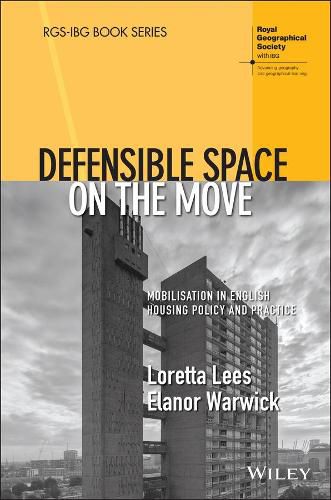Readings Newsletter
Become a Readings Member to make your shopping experience even easier.
Sign in or sign up for free!
You’re not far away from qualifying for FREE standard shipping within Australia
You’ve qualified for FREE standard shipping within Australia
The cart is loading…






Both theoretically informed and empirically rich, Defensible Space makes an important conceptual contribution to policy mobilities thinking, to policy and practice, and also to practitioners handling of complex spatial concepts.
Critically examines the geographical concept Defensible Space, which has been influential in designing out crime to date, and has been applied to housing estates in the UK, North America, Europe and beyond Evaluates the movement/mobility/mobilisation of defensible space from the US to the UK and into English housing policy and practice Explores the multiple ways the concept of defensible space was interpreted and implemented, as it circulated from national to local level and within particular English housing estates
Critiquing and pushing forwards work on policy mobilities, the authors illustrate for the first time how transfer mechanisms worked at both a policy and practitioner level Drawing on extensive archival research, oral histories and in-depth interviews, this important book reveals defensible space to be ambiguous, uncertain in nature, neither proven or disproven scientifically
$9.00 standard shipping within Australia
FREE standard shipping within Australia for orders over $100.00
Express & International shipping calculated at checkout
Both theoretically informed and empirically rich, Defensible Space makes an important conceptual contribution to policy mobilities thinking, to policy and practice, and also to practitioners handling of complex spatial concepts.
Critically examines the geographical concept Defensible Space, which has been influential in designing out crime to date, and has been applied to housing estates in the UK, North America, Europe and beyond Evaluates the movement/mobility/mobilisation of defensible space from the US to the UK and into English housing policy and practice Explores the multiple ways the concept of defensible space was interpreted and implemented, as it circulated from national to local level and within particular English housing estates
Critiquing and pushing forwards work on policy mobilities, the authors illustrate for the first time how transfer mechanisms worked at both a policy and practitioner level Drawing on extensive archival research, oral histories and in-depth interviews, this important book reveals defensible space to be ambiguous, uncertain in nature, neither proven or disproven scientifically